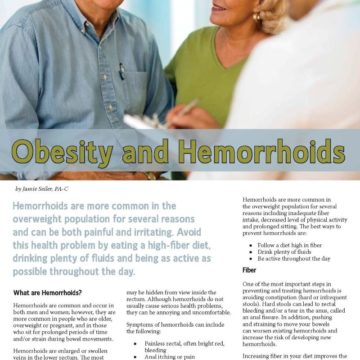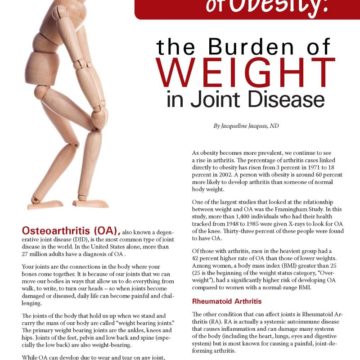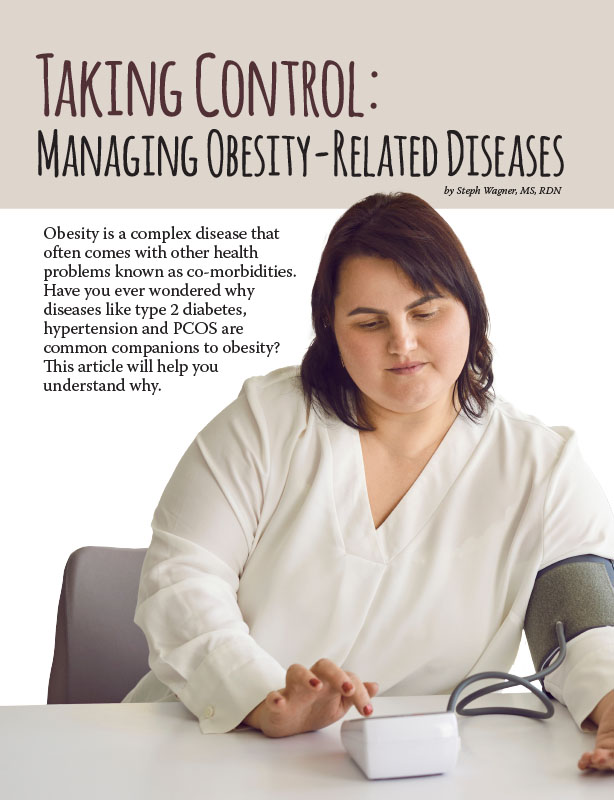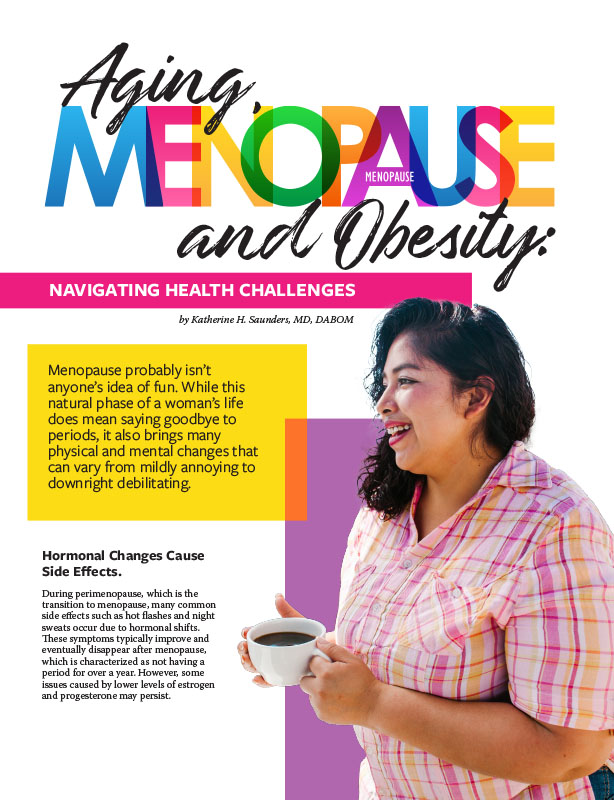Obesity and Periodontal Disease

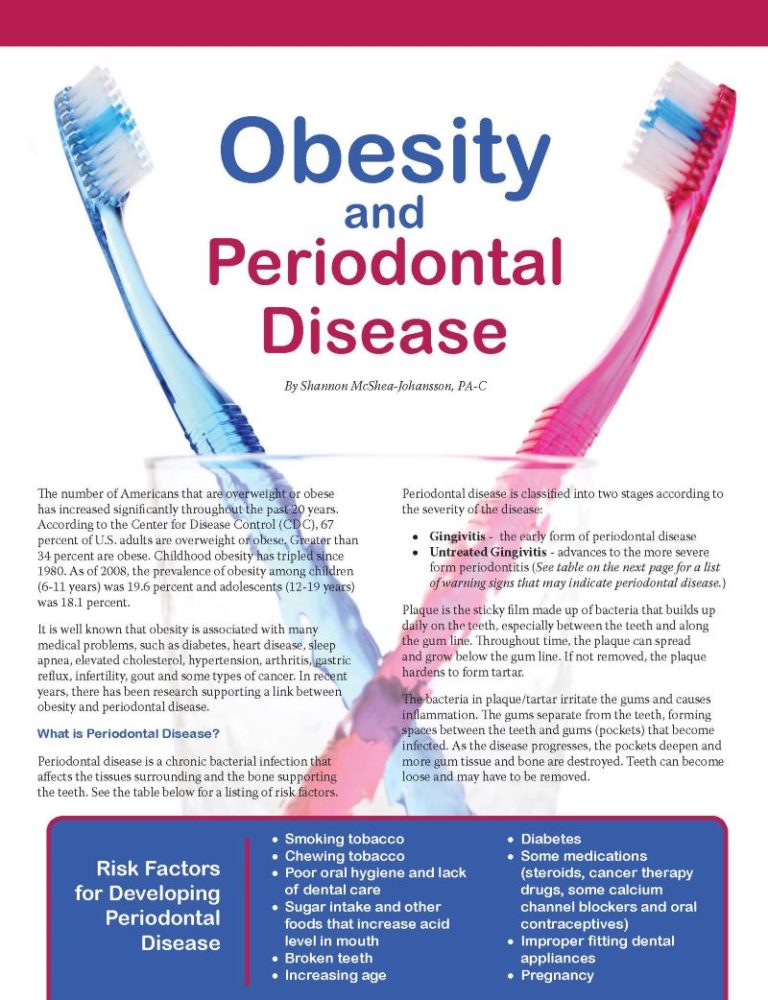
by Shannon McShea-Johansson, PA-C
Summer 2010
The number of Americans that have excess weight or obesity has increased significantly throughout the past 20 years. According to the Center for Disease Control (CDC), 67 percent of U.S. adults have excess weight or obesity. Greater than 34 percent have severe obesity. Childhood obesity has tripled since 1980. As of 2008, the prevalence of obesity among children (6-11 years) was 19.6 percent and adolescents (12-19 years) was 18.1 percent.
It is well known that obesity is associated with many medical problems, such as diabetes, heart disease, sleep apnea, elevated cholesterol, hypertension, arthritis, gastric reflux, infertility, gout and some types of cancer. In recent years, there has been research supporting a link between obesity and periodontal disease.
What is Periodontal Disease?
Periodontal disease is a chronic bacterial infection that affects the tissues surrounding and the bone supporting the teeth. See the table below for a listing of risk factors. Periodontal disease is classified into two stages according to the severity of the disease:
- Gingivitis – the early form of periodontal disease
- Untreated Gingivitis – advances to the more severe form periodontitis
Risk Factors for Developing Periodontal Disease:
- Smoking tobacco
- Chewing tobacco
- Poor oral hygiene and lack of dental care
- Sugar intake and other foods that increase acid level in mouth
- Broken teeth
- Increasing age
- Diabetes
- Some medications (steroids, cancer therapy drugs, some calcium channel blockers and oral contraceptives)
- Improper fitting dental appliances
- Pregnancy
Warning Signs of Periodontal Disease:
- Gums that bleed easily
- Red, swollen, tender gums
- Persistent bad breath or bad taste in mouth
- Gums that have pulled away from the teeth
- Changes in the way teeth fit together when biting
- Changes in the fit of partial dentures
- Permanent teeth that are loose or separating
Plaque is the sticky film made up of bacteria that builds up daily on the teeth, especially between the teeth and along the gum line. Throughout time, the plaque can spread and grow below the gum line. If not removed, the plaque hardens to form tartar.
The bacteria in plaque/tartar irritate the gums and causes inflammation. The gums separate from the teeth, forming spaces between the teeth and gums (pockets) that become infected. As the disease progresses, the pockets deepen and more gum tissue and bone are destroyed. Teeth can become loose and may have to be removed.
Not only is periodontitis a major cause of tooth loss, but it is also linked to other diseases affecting overall health. There have been reports in the literature of increased risk of heart disease and stroke, diabetes, respiratory disease and even premature babies with the presence of periodontal disease (visit the American Academy of Periodontology for more information – (www.perio.org).
How Does Obesity Affect Periodontal Disease?
Adults with excess weight or obesity have long been considered to be at high risk for many chronic inflammatory disease and conditions such as cardiovascular disease, diabetes and arthritis. Likewise, obesity appears to be an independent risk factor for the development of periodontal disease even after controlling other risk factors such as smoking, age and other medical problems. A recent study (Khader YS, et al.J Clin Periodontol 2009;36(1):18-24) showed that individuals with excess weight had double the incidence of periodontitis while individuals with severe obesity had triple the incidence.
Fat cells were once thought of as having limited function energy storage. It is now known that fat cells produce many chemical signals and hormones. Many of these substances are thought to increase overall inflammation in the body. This may lead to decreased immune status, which increases susceptibly to periodontal disease. The inflammation may also decrease blood flow to the gums and cause disease progression.
It is thought that this association, in part, could also be due to lifestyle characteristics that make individuals more prone to both obesity and periodontal disease.
Treatment of Periodontal Disease
The goal of treatment for periodontal disease is to stop the progression of disease, improve the health of surrounding gums, and if indicated, to restore the supporting structures (bone, gum tissue and ligaments). Thorough cleaning, removing tartar and plaque and scraping the deep pockets free of infected tissue are the basic steps.
Surgery is sometimes needed for repairing deep pockets or reshaping the bone and/or surrounding tooth structures. Oral or topical antibiotics are sometimes needed. Maintenance of proper oral hygiene is essential for long-term success.
Prevention of Periodontal Disease
Correct tooth brushing, mouth cleansing and flossing are the best defenses against periodontal disease. The American Dental Association recommends brushing teeth twice daily, in the morning and before bedtime, using fluoride toothpaste and a soft bristled toothbrush. It is important to clean all sides of the teeth and also brush the tongue. Replacing the toothbrush every one to three months is recommended. Flossing daily is important to remove bacteria and particles of food stuck between teeth.
Quitting smoking and chewing tobacco is one of the best ways to decrease risk of developing periodontal disease. Tobacco users are six times more likely to develop gum disease. Diet is very important for overall health, including dental health. Eating a low-fat, reduced sodium balanced diet of whole grains, vegetables and fruits is recommended. Limiting the time sugar is in contact with the teeth is advised. Avoiding sugary beverages (sodas, fruit juices, sweetened tea) and candies (especially ones that stick to the teeth like taffy) is helpful. Eating sugary foods in between meals and before bed is also discouraged. Regular dental visits are recommended for teeth cleaning and inspection.
Summary
Both obesity and periodontal disease significantly impact an individual’s overall health. Periodontal disease (early gingivitis to advanced periodontitis) affects up to 50 percent of the U.S. adult population (age 30-70) and 90 percent of adults older than 70 years old.
Understanding the relationship between obesity and the risk factors that lead to periodontal disease is very important. With the increasing rate of child and adolescent obesity, the prevalence of periodontal disease will follow. Keys to prevention of periodontal disease are through proper oral hygiene, a balanced diet and routine dental visits.
About the Author:
Shannon McShea-Johansson, PA-C, is a physician assistant at the Center for Nutrition and Weight Management at Geisinger Medical Center in Danville, Pa. She received her masters of physician assistant studies at DeSales University, Center Valley, Pa., and her bachelors of science in nutrition from Pennsylvania State University.
by Steph Wagner, MS, RDN Spring 2024 Obesity is a complex disease that often comes with other…
Read Articleby Katherine H. Saunders, MD, DABOM Spring 2024 Menopause probably isn’t anyone’s idea of fun. While this…
Read Articleby Sarah Ro, MD; and Young Whang, MD, PhD Fall 2023 Mary, a postmenopausal woman with a…
Read Article




